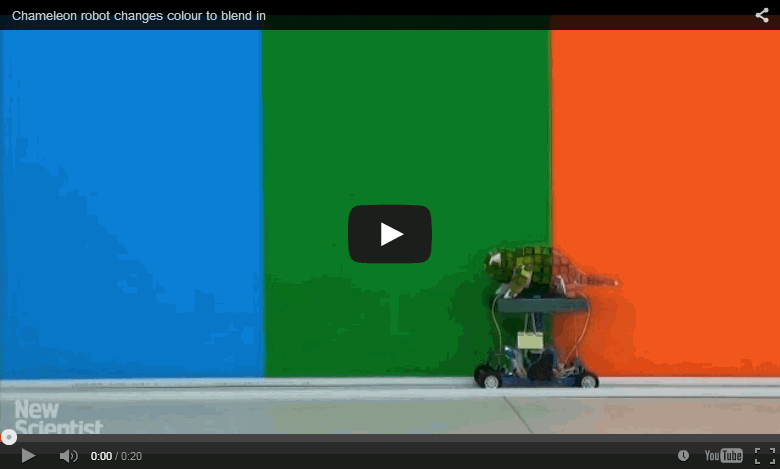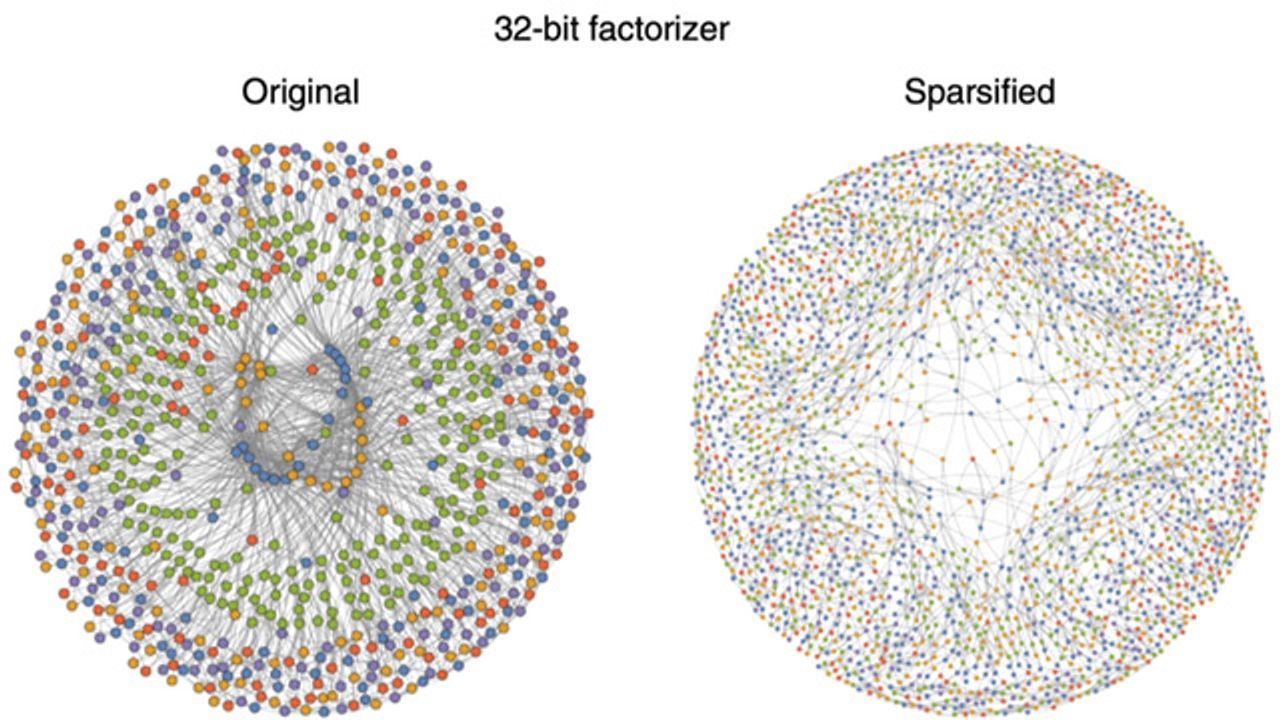
A 3D-printed “meta-bot” developed by UCLA engineers is capable of propulsion, movement, sensing and decision-making. It is manufactured all at once by a new type of 3D printing process for engineered active materials with multiple functions (also known as metamaterials).
A team of UCLA engineers and their colleagues have developed a new design strategy and 3D printing technique to build robots in one single step.
A study that outlined the advance, along with the construction and demonstration of an assortment of tiny robots that walk, maneuver and jump, was published in Science today.
The breakthrough enabled the entire mechanical and electronic systems needed to operate a robot to be manufactured all at once by a new type of 3D printing process for engineered active materials with multiple functions (also known as metamaterials). Once 3D printed, a “meta-bot” will be capable of propulsion, movement, sensing and decision-making.
The printed metamaterials consist of an internal network of sensory, moving and structural elements and can move by themselves following programmed commands. With the internal network of moving and sensing already in place, the only external component needed is a small battery to power the robot.
“We envision that this design and printing methodology of smart robotic materials will help realize a class of autonomous materials that could replace the current complex assembly process for making a robot,” said Xiaoyu (Rayne) Zheng.
“We envision that this design and printing methodology of smart robotic materials will help realize a class of autonomous materials that could replace the current complex assembly process for making a robot,” said the study’s principal investigator Xiaoyu (Rayne) Zheng, an associate professor of civil and environmental engineering, and of mechanical and aerospace engineering at the UCLA Samueli School of Engineering. “With complex motions, multiple modes of sensing and programmable decision-making abilities all tightly integrated, it’s similar to a biological system with the nerves, bones and tendons working in tandem to execute controlled motions.”
The team demonstrated the integration with an on-board battery and controller for the fully autonomous operation of the 3D printed robots — each at the size of a finger nail. According to Zheng, who is also a member of the California NanoSystems Institute at UCLA, the methodology could lead to new designs for biomedical robots, such as self-steering endoscopes or tiny swimming robots, which can emit ultrasounds and navigate themselves near blood vessels to deliver drug doses at specific target sites inside the body.
These “meta-bots” can also explore hazardous environments. In a collapsed building, for example, a swarm of such tiny robots armed with integrated sensing parts could quickly access confined spaces, assess threat levels and help rescue efforts by finding people trapped in the rubble.
Rayne Research Group/UCLA
UCLA-developed “meta-bots” demonstrate their flexibility and abilities to navigate tough terrain and avoid obstacles
Most robots, no matter their size, are typically built in a series of complex manufacturing steps that integrate the limbs, electronic and active components. The process results in heavier weights, bulkier volumes and reduced force output compared to robots that could be built using this new method.
The key in the UCLA-led, all-in-one method is the design and printing of piezoelectric metamaterials — a class of intricate lattice materials that can change shape and move in response to an electric field or create electrical charge as a result of physical forces.
The use of active materials that can translate electricity to motions is not new. However, these materials generally have limits in their range of motion and distance of travel. They also need to be connected to gearbox-like transmission systems in order to achieve desired motions.
By contrast, the UCLA-developed robotic materials — each the size of a penny — are composed of intricate piezoelectric and structural elements that are designed to bend, flex, twist, rotate, expand or contract at high speeds.
The team also presented a methodology to design these robotic materials so users could make their own models and print the materials into a robot directly.
“This allows actuating elements to be arranged precisely throughout the robot for fast, complex and extended movements on various types of terrain,” said the study’s lead author Huachen Cui.
“This allows actuating elements to be arranged precisely throughout the robot for fast, complex and extended movements on various types of terrain,” said the study’s lead author Huachen Cui, a UCLA postdoctoral scholar in Zheng’s Additive Manufacturing and Metamaterials Laboratory. “With the two-way piezoelectric effect, the robotic materials can also self-sense their contortions, detect obstacles via echoes and ultrasound emissions, as well as respond to external stimuli through a feedback control loop that determines how the robots move, how fast they move and toward which target they move.”
Using the technique, the team built and demonstrated three “meta-bots” with different capabilities. One robot can navigate around S-shaped corners and randomly placed obstacles, another can escape in response to a contact impact, while the third robot could walk over rough terrain and even make small jumps.
Original Article: UCLA Engineers Create Single-Step, All-in-One 3D Printing Method to Make Robotic Materials
More from: University of California Los Angeles | Virginia Polytechnic Institute and State University | University of California San Diego | Texas A&M University
The Latest Updates from Bing News & Google News
Go deeper with Bing News on:
Meta-bots
- Meta Quest Promo Codes
Molly Higgins is a product/content reviewer and contributing producer at WIRED. She graduated with a bachelor’s degree in English from UCLA and an MFA in creative nonfiction writing from the ...
- Meta Lock Codes (May 2024)
The most common reward from codes in Meta Lock are Spins, which you can use to reroll different aspects of your character, like flows, weapons, and even cosmetics. At the bottom of the screen ...
- Meta Platforms Inc Class A META
We sell different types of products and services to both investment professionals and individual investors. These products and services are usually sold through license agreements or subscriptions ...
- Meta now has an AI chatbot. Experts say get ready for more AI-powered social media
When you use Facebook Messenger these days, a new prompt greets you with this come-on: “Ask Meta AI anything.” You may have opened the app to send a text to a pal, but Meta’s new artificial ...
- Best Crypto Trading Bots in May 2024
Take your crypto trading to the next level with the help of these highly efficient and reliable crypto trading bots. The crypto market is constantly changing with new digital currencies and price ...
Go deeper with Google Headlines on:
Meta-bots
[google_news title=”” keyword=”meta-bots” num_posts=”5″ blurb_length=”0″ show_thumb=”left”]
Go deeper with Bing News on:
3D printed robots
- Inside China’s terrifying robot factory that is real-life WESTWORLD churning out ‘skin’ covered droids to replace humans
AN eerie robot factory in China pumps out “skin” covered droids that can be mistaken for a real person in a bid to replace humans. Bizarre footage shows humanoids with hyper-realistic ...
- Lifelike robot invasion: Inside China’s insane humanoid factory
A video depicting a Chinese humanoid robot factory reveals scores of robots at different stages of development, evoking surprise and concern.
- Camhirst Robots Introduces Innovative 3D Construction Printing Technology in Greater Manchester to Address Global Housing Shortage
Positioned in the heart of Greater Manchester, the company is poised to revolutionize global home construction with its advanced 3D Construction Printing Robots. Adam Ahmed Camhirst CEO with ...
- This gigantic 3D printer could reinvent manufacturing
A massive additive manufacturing device that can build houses, and a whole lot more has just been unveiled at the University of Maine.
- ABB Expands Its Modular Large Robot Portfolio
ABB’s new IRB 7710 and IRB 7720 robots offer new levels of flexibility and greater choice with almost 50 variants.
Go deeper with Google Headlines on:
3D printed robots
[google_news title=”” keyword=”3D printed robots” num_posts=”5″ blurb_length=”0″ show_thumb=”left”]










